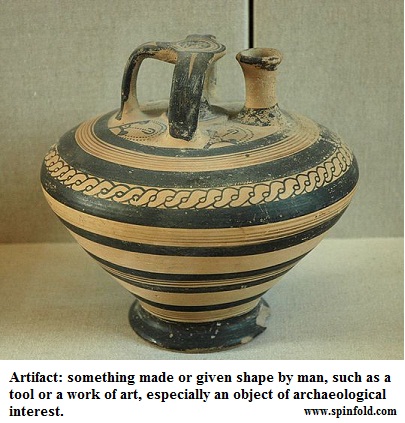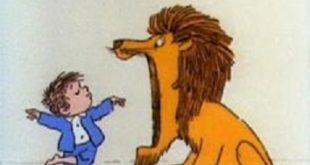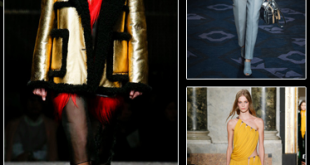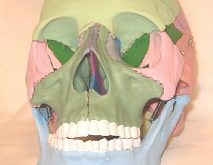Noun: artefact
Pronunciation:(‘aa(r)-ti,fakt)
Artefact meaning:
- A man-made object taken as a whole
Synonyms: artifact

- Something that appears in a scientific result that is not a true feature of thing being studied, but instead a result of the experimental or analysis method, or observational error
Synonyms: artifact
Derived forms: artefacts
Quotations:
- Jennifer Estep – Not your weapons,” Agrona sneered. “Your artifacts. Sigyn’s bow. The Horn of Roland. The Swords of Ruslan. And, of course, Vic.””Well, naturally,” the sword crowed, his voice swelling with pride. “I do put the art in artefact.”I looked down on him. “Really?” I whispered. “You’re really going to talk about how awesome you are at a time like this?””Certainly,” Vic said. “Why wouldn’t I?
- W.G. Sebald – From the first smouldering taper to the elegant lanterns whose light reverberated around eighteenth-century courtyards and from the mild radiance of those lanterns to the unearthly glow of the sodium lamps that line the Belgian motorways, it has all been combustion. Combustion is the hidden principle behind every artefact we create. The making of a fish-hook, manufacture of a china cup, or production of a television programme, all depend on the same process of combustion. Like our bodies and like our desires, the machines we have devised are possessed of a heart which is slowly reduced to embers.
- Terry Pratchett – All it takes is for people to believe and I am no longer just an artefact put together by clever engineers. I am an idea, a something made of nothing, whose time has come to be. Some may even call me “Goddess”.
- Michael K. Schaefer – As much as he loved Old Earth artefacts, it was tremendously frustrating at times to know that it wasn’t possible to prove the original purpose of so many of them. Spotting an object he had puzzled over for the past two years, he stopped at its shelf, picked up the crumpled piece of plastic, and unfolded it until it had the approximate shape of a woman. She could be inflated by blowing air into an attached valve. Although he did have his suspicions as to what she was for (and he blushed even thinking about it he described her as a portable statue of a surprised female to potential customers), he still yearned to know whether he was right or not.
- Sherry Turkle – We ask of the computer not just about where we stand in nature, but about where we stand in the world of artefact. We search for a link between who we are and what we have made, between who we are and what we might create, between who we are and what, through our intimacy with our own creations, we might become.
- Angela Carter – The introduction of cinematography enabled us to corral time past and thus retain it not merely in the memory – at best, a falsifying receptacle – but in the objective preservative of a roll of film. But, if past, present and future are the dimensions of time, they are notoriously fluid. There is no tension in the tenses and yet they are always tremulously about to coagulate. The present is a liquid jelly which settles into a quivering, passive mass, the past, as soon as – if not sooner than – we are aware of it as present. Yet this mass was intangible and existed only conceptually until arrival of the preservative, cinema.The motion picture is usually regarded as only a kind of shadow play and few bother to probe the ontological paradoxes it presents. For it offers us nothing less than the present tense experience of time irrefutably past. So that the coil of film has, as it were, lassoed inert phenomena from which the present had departed, and when projected upon a screen, they are granted a temporary revivification. The images of cinematography, however, altogether lack autonomy. Locking in programmed patterns, they merely transpose time past into time present and cannot, by their nature, respond to the magnetic impulses of time future for the unachievable future which does not exist in any dimension, but nevertheless organizes phenomena towards its potential conclusions. The cinematographic model is one of cyclic recurrences alone, even if these recurrences are instigated voluntarily, by the hand of man viz. the projectionist, rather than the hand of fate. Though, in another sense, the action of time is actually visible in the tears, scratches and thumbprints on the substance of the film itself, these are caused only by the sly, corrosive touch of mortality and, since the print may be renewed at will, the flaws of aging, if retained, increase the presence of the past only by a kind of forgery, as when a man punches artificial worm-holes into raw or smokes shadows of fresh pain with a candle to produce an apparently aged artefact. Mendoza, however, claimed that if a thing were sufficiently artificial, it became absolutely equivalent to the genuine.
- William Gibson – The pop star, as we knew her” and here he bowed slightly, in her direction”was actually an artefact of ubiquitous media.”Of a state in which ‘mass’ media existed, if you will, within the world.””As opposed to?””Comprising it.
- Tsering Wangmo Dhompa – The flowers in Tibet were always taller, more fragrant and vivid. Her descriptions, imprecise but unchanging from year to year lead me to an inevitable acceptance that her past was unequaled by our present lives. She would tell me of knee-deep fields of purple, red and white- plants never named or pointed out to during our years in India and Nepal- that over time served to create an idea of her fatherland, phayul, as a riotous garden. I pictured her wilderness paradise by comparing them not to the marigolds, daises or bluebells I crushed with my fingers, but to the shape of household artefacts around me: lollipop, broom, bottle. Disparate objects that surrendered to and influenced the idea, space and hope of a more abundant and happy place.
- Edward James – Contemporary Marxist sf theory from the European tradition can be accused of paying insufficient attention to the ways techno scientific innovations have transformed social life globally to their potential to transform the means of production, and with them world models, cultural values and human bodies. Jameson has taken on the challenge, after a fashion, in his work on postmodernism and Third World cinema, but his interest in this area is primarily in the effect of technology on art, drawing conclusions about world-currents through elite artefacts.
- J.K. Rowling – Agatha Chubb, expert in ancient wizarding artefacts, has identified no fewer than twelve lead Bludgers dating from this period, discovered both in Irish peat bogs and English marshes. “They are undoubtedly Bludgers rather than cannonballs,” she writes. The faint indentations of magically reinforced Beaters’ bats are visible and one can see the distinctive hallmarks of manufacture by a wizard as opposed to a Muggle – the smoothness of line, the perfect symmetry. A final clue was the fact that each and every one of them whizzed around my study and attempted to knock me to the floor when released from its case,
Sample sentences:
- You’re 250 years old!?”He gives me a wink of his beautiful eye in response. “Surprised?””Um, hell yeah. Ok, that’s pretty much disgusting. Chester the Molester. I’ve been screwing an ancient artefact!” Dorian & Gabriella
- So, you care about me now, I said, meaning to make a joke of it, but it came out soft and low and full of something guttural that made me embarrassed. Why? Because I don’t know anybody like you. You’re like a rare artefact. And it would be a shame if you got broken. Amusement spluttered from me in the most unattractive way. Are you really comparing me to an antique right now? Oh my God, you nerd. He started laughing, and the carefree melody of it swept me up until I was laughing too, and it was absurd because our families were being threatened and murdered and there we were squished together in a hundred-degree heat outside a maximum security prison, and we used to hate each other and now we were laughing so hard I had tears in my eyes.He composed himself first, but it took a while and I was left choking my laughter into silence. What I meant was, his face twisted into a quiet smile that felt secret and deadly, you’re a bright spark, Sophie. And I don’t want anyone to snuff you out. Oh. Well I couldn’t make fun of that. Was I supposed to say something back? Wasn’t that how compliments worked? The silence was growing and suddenly his words felt heavy and important and he was so close to me and I was perspiring and panicking, and and I said, And you’re kind of like a snowflake. Oh, Jesus Christ.He masked his fleeting surprise with a quirked eyebrow. Excuse me? Nothing, I said quickly. I didn’t say anything. No, no, he said, rounding on me so his face was too close, his eyes too searing, his smile too irritating. I’m a snowflake, am I? Shut up. Seriously. I pulled wisps of loose hair around my cheeks. Shut up. I think you were trying to tell me I was special. Icy, I said. I meant you were icy.I could practically taste his glee. I was floundering, and he was relishing it. And unique, in that you’re uniquely annoying, I added. God, you’re annoying.
- These pieces, he already realised, were merely stepping stones at the start of a journey towards something – some grand artefact, either musical, or literary, or filmic, or perhaps a combination of all three – towards which he knew he was advancing, slowly but with a steady, inexorable tread. Something which would enshrine his feelings for Cicely, and which she would perhaps hear, or read, or see in ten or twenty years’ time, and suddenly realize, on her pulse, that it was created for her, intended for her, and that of all the boys who had swarmed around her like so many drones at school, Benjamin had been, without her having the wit to notice it, by far the purest in heart, by far the most gifted and giving. On that day the awareness of all she had missed, all she had lost, would finally break upon her in an instant, and she would weep; weep for her foolishness, and of the love that might have been between them.Of course, Benjamin could always just have spoken to her, gone up to her in the bus queue and asked her for a date. But this seemed to him, on the whole, the more satisfactory approach.
- In a manner of speaking, the fact that humankind itself is unpredictable is the quintessential stumbling-block for archaeologists. We have to assume that the people whose dwelling-places, artefacts, lives even, we are dealing with were rational, integrated, sane and sensible human beings. Then we look around at our own contemporaries and wonder how this belief can possibly be sustained.
- This book argues that evolution is happening all around us. It is the best way of understanding how the human world changes, as well as the natural world. Change in human institutions, artefacts and habits is incremental, inexorable and inevitable. It follows a narrative, going from one stage to the next; it creeps rather than jumps; it has its own spontaneous momentum,
- It’s reasonable to try for success. Paradoxically, it’s also sane to admit defeat. This excels the coming of the end. And when that tide has crested and broken, it recedes from the shore to leave behind something of principle significance. An artefact borne from the lunatic fight. The human struggle. And I can see myself, not too far into the future, with my hair whipping about in the fray of coastal spray, arching low to pick up that wriggling, billion-limbed nautilus, to hold it to my winter-cold ear, to hear what I could hear.
- Lillian comes out of the kitchen carrying an artefact, the blue metal tin marked Danish Butter Cookies that if I didn’t know better I would swear had been in the family for generations – when the Jews left Egypt, they took with them the tins of Danish Butter Cookies. And tins, which as best as I could tell never included Danish Butter Cookies, traveled from house to house, but always, always found their way back to Lillian.
- The distinction between artefact and organism dissolved in a Petri dish.
- Have fun playing with your artefacts.
- Many people remember that when in 1977 the Voyager spacecraft was launched, opinions were canvassed as to what artefacts would be most appropriate to leave in outer space as a signal of man’s cultural achievements on earth. The American astronomer Carl Sagan proposed that ‘if we are to convey something of what humans are about then music has to be a part of it.’ To Sagan’s request for suggestions, the eminent biologist Lewis Thomas answered, ‘I would send the complete works of Johann Sebastian Bach.’ After a pause, he added, ‘But that would be boasting.
- Religions are often state-protected nurseries of pseudoscience, although there’s no reason why religions have to play that role. In a way, it’s an artefact from times long gone.
- Spiritual life was much more significant than material life for the Australian Aboriginal people. Instead of putting their surplus energy into squeezing more food out of the land, Aborigines expended it on intangibles: spiritual, intellectual and artistic activities. They carried their palaces on their backs, their cathedrals were built in their minds and they felt no need to glorify human heroes. It is in the mind and the creativity of the spirit in the intangible rather than the tangible artefacts that Aboriginal society stands out.
- After Independence, Uganda — A European artefact — was still forming as a country rather than a kingdom in the minds of ordinary Gandas. They were lulled by the fact that Kabaka Muteesa II was made president of the new Uganda. Nonetheless most of them felt that ‘Uganda’ should remain a kingdom for the Ganda under their kabaka so that things would go back to the way things were before the Europeans came. Uganda was a patchwork of fifty or so tribes. The Ganda did not want it. The union of tribes brought no apparent advantage to them apart from a deluge of immigrants from wherever, coming to Kampala to take their land. Meanwhile, the other fifty or so tribes looked on flabbergasted as the British drew borders and told them that they were now Ugandans. Their histories, cultures and identities were overwritten by the mispronounced name of an insufferably haughty tribe propped above them. But to the Ganda, the reality of Uganda as opposed to Buganda only sank in when, after independence, Obote overran the kabakas lubiri with tanks, exiling Muteesa and banning all kingdoms. The desecration of their kingdom by foreigners paralyzed the Ganda for decades.
- I didn’t know much about it either. Connie said that it was once traditional for young men of a certain class and age to embark on a cultural pilgrimage to the continent, following well-established routes and, with the help of local guides, taking in certain ancient sites and works of art before returning to Britain as sophisticated, civilised men of experience. In practice the culture was largely an excuse for drinking and whoring and getting ripped off, arriving home with pillaged artefacts, some bottles of the local booze and venereal disease.
- New kind of realm was gradually formed. This, the human world, is materially rooted in the natural world but is quite different from it. It is populated by individuals who are not just organisms, as is evident in that they inhabit an acknowledged, shared public sphere, structured and underpinned by an infinity of abstractions, generalizations, customs, practices, norms, laws, institutions, facts, and artefacts unknown to even the most social of animals.
- I didn’t want to carry and feed this artefact of my inherent unlovability this physical proof that any permanent connection to me must be an accident.
- Someone who fulfills a role in society as a producer of artefacts and activities which confront death by telling us we are alive.
- I have a habit of being an archaeologist of my own past, a sentimental collector of personal artefacts which may at first glance appear random, but each of which holds a unique significance. As the years pass me by, I find that the number of objects within my possession begins to accumulate. A torn map. A sealed letter. A boat full of paper animals. Each item encapsulates within itself a story, akin to an outward manifestation of my inner journey.
- Fractal shapes were being expressed intuitively by artists long before they were recognized in science. Self-similar patterns appear in Celtic artefacts, like the spirals and circles within circles of the exquisitely crafted illuminated pages of the early 9th-century Book of Kells and the Densborough mirror made in the 1st century A.C. Mathematical awareness, particularly fractal awareness, reveals itself in the art of the Romans and the Egyptians, and in the work of the Aztec, Inca and Mayan civilizations of Central and South America. Shapes highly reminiscent of the Koch curve were used to depict waves by the Hellenic artist in a frieze in the ancient Greek town of Akrotiri.
- 5 principles of service design thinking.User-centred Services should be experienced through the customer’s eyes. Co-creative All stakeholders should be included in the service design process. Sequencing The service should be visualized as a sequence of interrelated actions. Evidencing Intangible services should be visualized in terms of physical artefacts. Holistic The entire environment of a service should be considered.
- A skeuomorph is an artefact that imitates the design of a similar thing made from another material, such as a pottery box made to look like a wicker basket.
- The owner of the 300-year-old artefact inherited it and used it to keep flowers – until it was spotted by eagle-eyed valuers who came on another errand.
- The global migration remains evident and statistically significant under a formal data homogenization procedure, and is unlikely to be a data artefact.
- Annie Hammerton, on a recent Antiques Roadshow, presented roadshow veteran Hilary Kay with a rare artefact from Oliver Cromwell’s funeral.
- Seattle-based designers, artefact, created the concept Token bracelet to offer the wearer a complete analysis of their spending habits.
- The British Museum is guarding a precious artefact that was looted from Syria, in the hope of returning it when the country is stable.
- The six-foot-long artefact was discovered inside a house in Bradwell-on-Sea.
- Archaeologists with the Australian National University say the artefact is more than 46,000 years old, and was worn through the nose of one of Australia’s earliest inhabitants.
- The observed volume effect might have been exaggerated by artefact.
- Is the ‘obesity paradox’ real or an artefact of how studies are conducted?
 Spinfold VisualDictionary-Evolutree- Technorip-Amazing Facts and much more.
Spinfold VisualDictionary-Evolutree- Technorip-Amazing Facts and much more.





